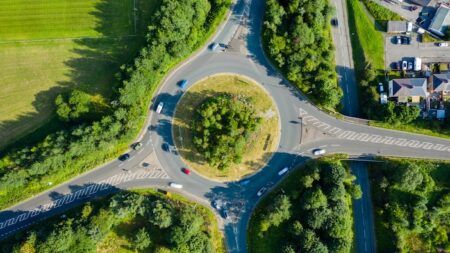The latest analysis of data from more than 100 local authority areas across England suggests that traffic levels in the current Covid-19 Lockdown Three are up 10 percentage points, compared to the first lockdown in March 2020. Traffic is now at up to 45% below pre lockdown levels, whereas the lowest in Lockdown One was around 55%.
The Transport Technology Forum study of traffic count data in towns and city centres and on rural roads suggests the volume of traffic has changed, as well as the timing of traffic peaks.
Data company Inrix also identified that not only has there been the rise in the trips (traffic count) during this lockdown, but the greater trip length means more vehicle miles have been traveled. This suggests there are fewer shorter trips being made, perhaps due to changes in school arrangements, more home deliveries rather than travelling to go shopping, and less leisure in the winter months.
Comparing these datasets suggests that traffic patterns may not only be changing in volumes, but also in terms of origin and destination. By considering traffic count data and other datasets together, such as trips, we can gain a richer understanding of these changes, which may not be apparent when considering each dataset in isolation.
“Vehicle miles traveled data can be compared with count data, to identify changes in trip length,” explained Andy Graham of White Willow Consulting who works with Inrix and Arup on the analysis. “There is a clear value in comparing trends from different types of sensors – vehicle and on street – to see the shape of traffic patterns as they change.”
The implications of this study, and what authorities can learn from it, will be discussed at the TTF’s Annual Conference March 3-5, 2021.





